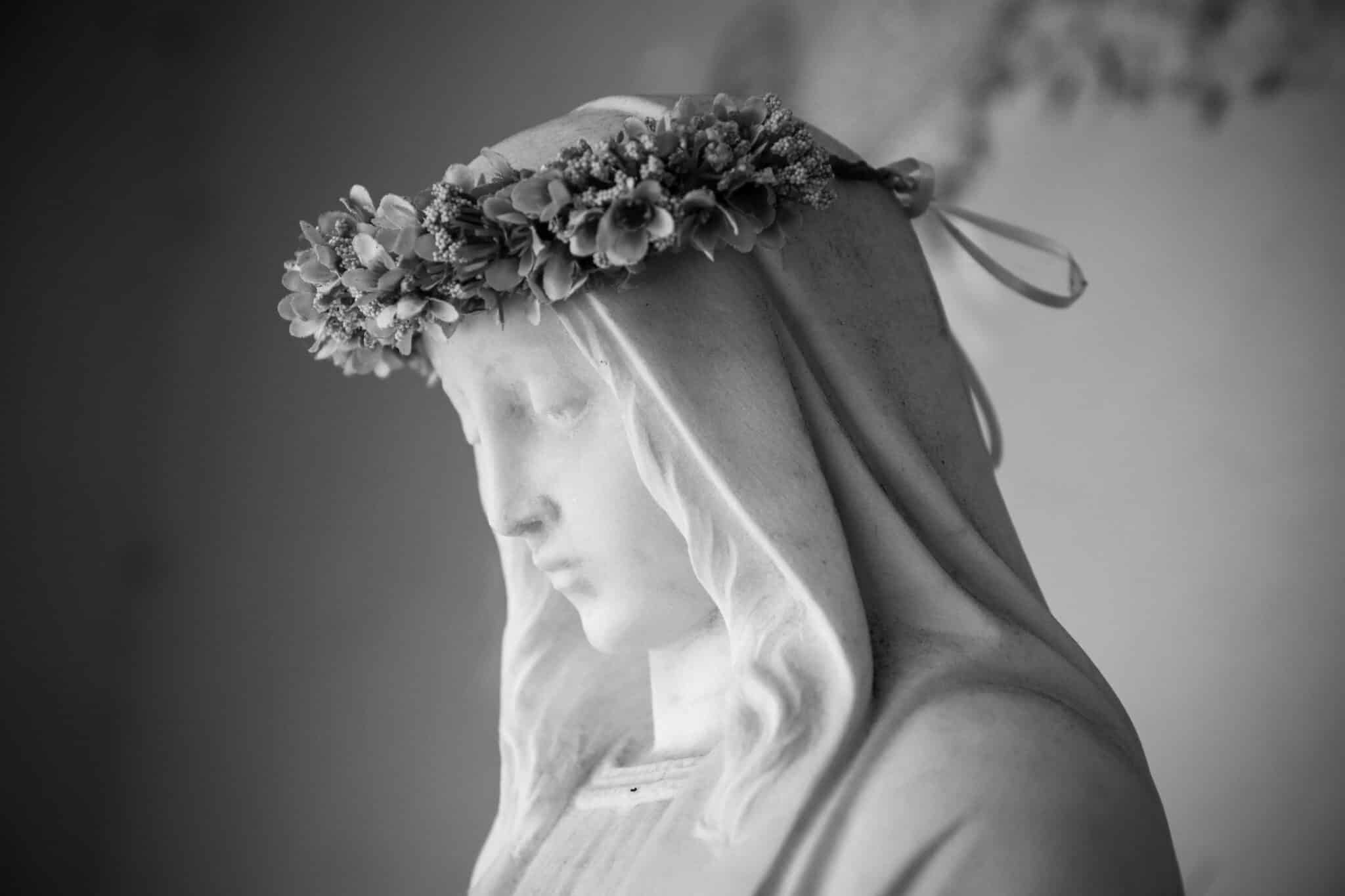Whenever I read the notice in my parish bulletin about the upcoming date for May Crowning, I recall the celebrations of days gone by and start humming those familiar Marian hymns I learned as a child.
Although there have been some changes in these celebrations since my Catholic grade school days in the 1950s, the basics remain the same: A statue that represents our “holy queen enthroned above” is crowned with blossoms while parishioners sing Marian hymns and recite prayers associated with Mary.
An Exciting Month
When I was a child, May was an exciting month, in part because the school year was almost over, but also because of special Marian devotions. We created May altars in our classrooms and were encouraged to set them up in our homes, too. These altars consisted of a special location where we placed a statue of a European-looking Mary, always dressed in blue, and vases that we replenished with fresh flowers. We prayed many rosaries before those altars.
May altars continued throughout the month, but May Crowning was a once-a-year special event. Everyone wore his or her best clothes: Second-graders donned their First Communion outfits again and eighth-graders proudly initiated their graduation attire. Eighth-grade girls anxiously awaited the announcement of the female classmate who had been selected by the teachers, mostly nuns in those days, to crown the Blessed Virgin. The lucky girl was a virtuous student who was encouraged to pursue a religious vocation.
When the big day arrived, we processed into church carrying flowers we brought from home as we sang, “’Tis the Month of Our Mother,” and other Marian songs we had practiced. We presented our flowers before the large statue that represented the Queen of the May. The perfume of lilacs and other seasonal flowers permeated the air.
The climax of the celebration was the moment when the lucky but nervous student reached up and placed the crown of flowers on Mary’s head. Our cherubic voices soared as we belted out, “O Mary, we crown thee with blossoms today,” from “Bring Flowers of the Rarest.”
Dandelions and Chicken Wire
Sometimes traditions need to be adapted. For example, students who live in apartments don’t have access to homegrown flowers. Thus, many May Crowning blossoms today are ordered from florists. And it’s not just young girls who are being selected to crown Mary: Last year in Milwaukee, an eighth-grade boy was given the honor.
Most of the religious art I was exposed to as a child mirrored the environment of white European artists from the Renaissance. Today, we realize that images of Mary should reflect various cultures and artistic styles. One version of May Crowning suggests participants bring whatever flowers they can find (even dandelions), which they insert in a chicken wire crown. The congregation is reminded that each flower is unique and a gift from God.
May Crowning and other Marian devotions remind us to honor our heavenly Mother all year.
May Crowning
The crowning of statues of Mary during May was once very common among Catholics in the United States and is making a small comeback. It is still common in other countries but not always during May. Mary teaches us what it means to pray and ponder over the events that we need to sort out. Mary always points us to Jesus, her son, Lord and the source of her strength.
Over the centuries, many artists have felt freer to represent Mary as belonging to their time and culture than to do the same for Jesus. In that sense, Mary may seem more approachable. Crowning her statue acknowledges her as queen as well as disciple.








